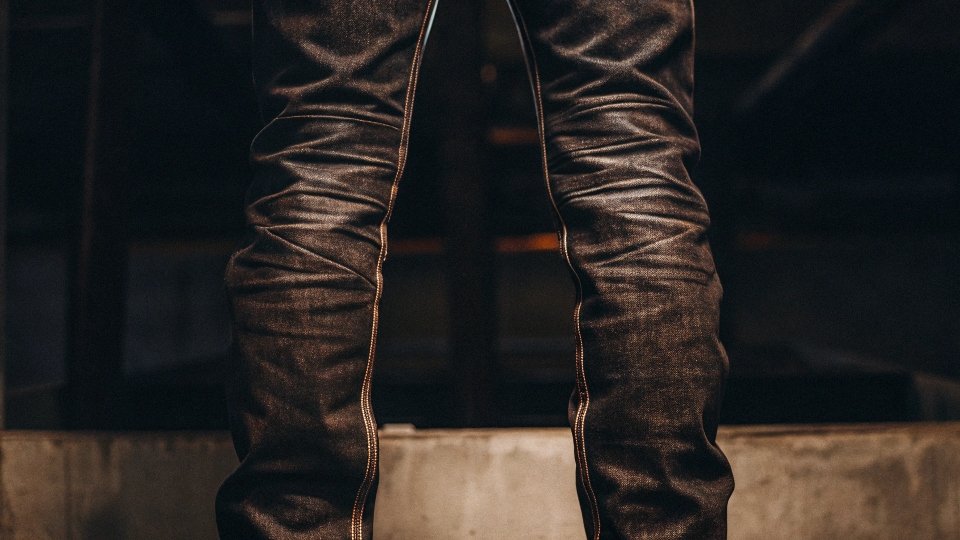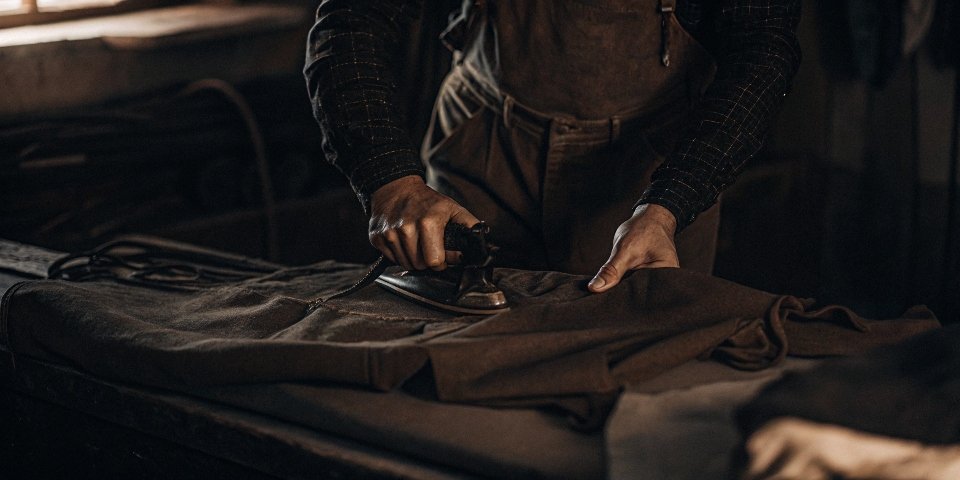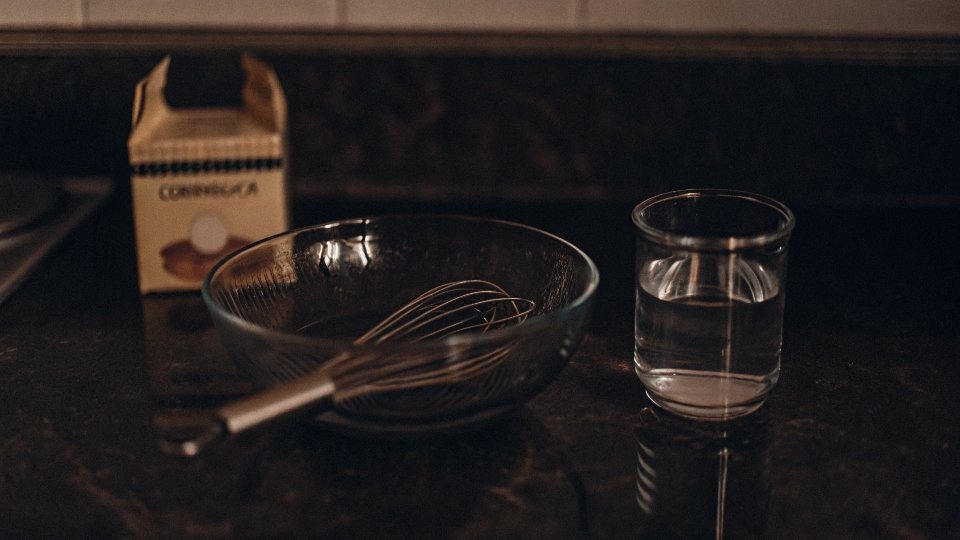Your jeans feel soft and comfortable, but some people make them stiff as a board. This practice seems strange, turning a casual garment into something formal and rigid.
People starch their jeans to give them a crisp, wrinkle-free appearance and a stiff structure. The starch creates a protective layer that helps maintain a sharp crease, repels dirt, and can make the jeans last longer.
This is a topic that rarely comes up with fashion-forward designers like Dean, who chase softness and a worn-in feel. But in my two decades of running a denim factory, I've learned that not everyone wants that. Starching is a tradition with deep roots, especially in American Western culture.
It's a specific choice that serves a very specific purpose—one that values sharpness and durability over the soft comfort we usually aim for. It’s a fascinating side of the denim world that shows just how versatile this fabric can be.
Why do cowboys wear heavy starch jeans?
You imagine cowboys wanting tough, flexible clothes. So why would they choose jeans that are uncomfortably stiff? The reason links practicality with a powerful sense of pride.
Cowboys wear heavy starch jeans for three main reasons: protection from dirt and grime, increased durability of the denim1, and the sharp, clean appearance that is a mark of professionalism and respect in rodeo and Western culture.
The tradition of heavy starch is a big part of the modern cowboy uniform. It’s about more than just looks. Starch creates a hard, slick finish on the denim. When a cowboy is working around dirt, dust, and mud, that grime latches onto the starch, not the cotton fibers. At the end of the day, the jeans are easier to clean. The stiffness also acts like a protective shell, adding an extra layer of durability against scrapes from brush or rough work. But the biggest reason is the look.
A razor-sharp crease2 down the leg is a symbol. It says you take pride in your appearance. For rodeo competitors, it’s like a business suit—it shows respect for the sport, the judges, and the tradition. It turns a simple work garment into something sharp and professional.
| Feature | Unstarched Jeans | Heavily Starched Jeans |
|---|---|---|
| Appearance | Soft, casual, forms to the body naturally. | Crisp, sharp crease, looks formal and clean. |
| Protection | Absorbs dirt and moisture directly into the fibers. | Repels surface dirt; starch layer takes the grime. |
| Durability | Subject to normal wear and tear. | Increased stiffness reduces friction and abrasion. |
| Comfort | Comfortable and flexible from the first wear. | Initially very stiff, molds to the rider over time. |
Why did people starch pants?
Before modern laundry technology, keeping clothes looking clean was a constant battle. Why did our grandparents bother with the extra step of starching their pants and shirts?
Historically, people starched pants and other clothes to keep them looking clean and neat for longer. Starch created a stiff, smooth surface that resisted wrinkles and dirt, which was essential before permanent press fabrics and advanced detergents existed.
Long before my factory started using enzymes and softeners to get that perfect feel, starch was a household essential. Think about old fabrics like basic cotton or linen. They wrinkled if you just looked at them. Starch was the solution. It added "body" to the fabric, helping it hold its shape and resist creasing throughout the day. This had a practical benefit beyond just appearance. The smooth, starched surface3 acted as a shield against dirt.
Instead of sinking into the fabric's weave, dirt would sit on the surface of the starch. When it was time to wash, the starch would dissolve in the water, taking the dirt with it. This meant clothes could be cleaned with less harsh scrubbing, which made them last longer. In many ways, a starched collar or a pressed pair of trousers was a sign of class—it showed you had the means and time to maintain your clothing properly.
Why do people cornstarch their jeans?
You see "heavy starch" services at dry cleaners, but some people do it at home. How do they achieve that same stiffness? The answer is probably in their kitchen pantry.
People use cornstarch on their jeans because it's a cheap, effective, and readily available ingredient to make their own liquid starch solution. When mixed with water and applied before ironing, it provides the same stiffening effect as commercial starch products.
Using cornstarch is just the do-it-yourself way of starching clothes. Commercial laundry starch, especially the liquid kind you mix with water, is fundamentally a simple starch solution. Cornstarch is a pure, food-grade starch that works perfectly for this purpose. The process is simple. You mix cornstarch with water to create a slurry. Some people boil it briefly to create a thicker, more stable gel, and then dilute it.
You can then soak the jeans in this starchy water or put it in a spray bottle and mist the jeans as you iron them. People choose cornstarch for a few reasons. It is incredibly inexpensive. It's also free of the perfumes and chemical propellants you might find in aerosol starch cans. It gives the user complete control over the final stiffness—you just add more or less cornstarch to get the exact result you want.
| Feature | DIY Cornstarch Method | Commercial Aerosol Starch |
|---|---|---|
| Cost | Extremely low, pennies per use | Higher cost per can/use |
| Control | Full control over stiffness level | Pre-set levels (e.g., light, heavy) |
| Ingredients | Just cornstarch and water | Includes propellants, fragrances, other chemicals |
| Convenience | Requires mixing and preparation | Very convenient, instant point-and-spray use |
Why do cowboys roll up their jeans?
You notice that many cowboys cuff their jeans high above their boots. Is this just a style choice, or is there a practical reason behind that classic rolled-up look?
Cowboys traditionally roll up their jeans for purely functional reasons. It keeps the hem from getting caught in stirrups, prevents it from dragging in mud, and accommodates the tall shafts of cowboy boots4, as jeans historically came in one long inseam.
This habit comes from a time before you could buy jeans in dozens of different inseam lengths. Brands often sold jeans in one standard, extra-long length, and it was up to the buyer to manage the extra fabric. A working cowboy couldn't have that extra material flapping around. A loose hem could easily snag on a stirrup while mounting a horse, which is incredibly dangerous.
It would also get torn up on brush or caked with mud on the ground. The simplest, most effective solution was to just roll it up into a clean cuff. This kept the hem secure and out of the way. Over time, this practical necessity became part of the iconic look. While a starched jean is often stiff enough to "stack" (bunch up neatly) over boots, many still prefer the clean, traditional cuff5. It’s another example of how function created a timeless style in the Western world.
Conclusion
Starching jeans is a tradition born from a need for durability, protection, and a sharp appearance, especially in Western culture. It prioritizes function and pride over the soft comfort of modern fashion.
-
Find out how starching increases the durability of denim, making it last longer. ↩
-
Explore the significance of a sharp crease in jeans and its association with professionalism. ↩
-
Find out how a smooth, starched surface helps maintain clothing appearance and cleanliness. ↩
-
Understand how cowboy boots affect the style and fit of jeans in Western fashion. ↩
-
Discover how the traditional cuff has become an iconic element of cowboy fashion. ↩











